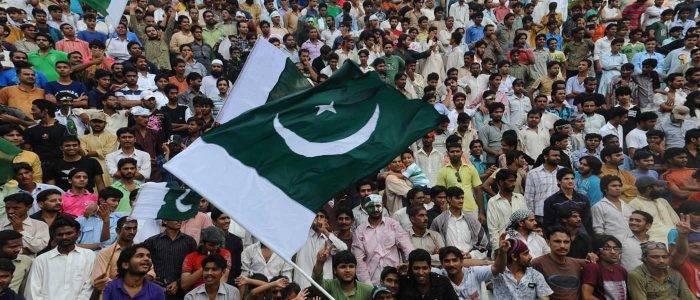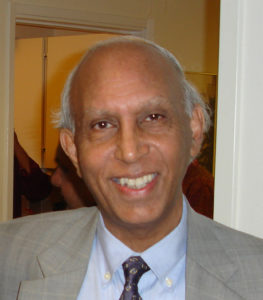
Historically religion has been the concern of clergy who have always claimed monopoly on truth on grounds that they were experts of their religion.

Dr. Ishtiaq Ahmad
The rise of the middle class historically has been associated with business and commerce and after the print revolution introduced by the printing machine in the 16th century. The European middle class became the most church going as well, while the scientists and philosophers undertook revolutionary changes in thinking as a result of the scientific discoveries and inventions, the growth of industrial society and processes of secularisation began to impinge on the culture and sensibilities of the middle class.
The character of the middle classes in the colonial world of Asia and Africa was different. The initial political awakening took place among elite sections of society who were able to get a Western education and acquired ideas of freedom and liberty from the colonial powers. After 1947, we find the liberal type of religiously inspired as well as secular ideas of government and society were still predominant until the end of the 1970s.
In Pakistan the Jamaat-e-Islami represented fundamentalist Islam and it attracted those middle class and lower middle class Muslims which had received some education. Beginning from early 1970s and with the rise of oil rich Iranian and Saudi states engaged in sectarian rivalry and Zia-ul-Haq in power the whole agenda of politics turned anti-modern, anti-women and anti-minorities and with sectarianism gaining ground.
However, despite these anti-modern and anti rational trends more and more people were inducted into schools including girls. The new middle class emerging from the 1980s was exposed to fundamentalist ideas of religion and narrow morality and religion became the main source of for defining the world views of the middle class.
The middle class, its religiosity and moral hang ups
South Asian society is like a pyramid with the rich and powerful small but very privileged at the top, the 'middle class' broadly includes three sub-structures the upper middle class, the middle middle class and the lower middle class. The social pyramid is very broad with the poor and the very poor at the bottom.
I think in order to put in sharp relief the peculiar fixation with religion and moralism of the middle class one can argue that the rich and the powerful use religion purely for instrumental reasons: to find arguments from religion to teach people to accept the unequal and unfair economic and social systems as natural and inevitable. Rarely would you find someone from the prosperous classes obsessed with religion or morality.
At the bottom the poor and very poor have no time or energy to be interested in religion except as some ritual to beg for charity or generally too crushed to be concerned about death since their lives are already some form of living hell. They tend to be fatalists without being religious. I noticed during my research on the Punjab that many such poor masses did not even know the muslim declaration of faith or Kalima properly.
In my previous article, I indicated that the middle class of the Indian subcontinent was increasingly exposed to fundamentalist ideas and ideologies from the late 1970s while simultaneously induction of people into the school systems including girls increased and expanded.
Alongside such changes we notice rapid urbanization. People coming from the villages bring along conservative ideas in their baggage.
The middle class is acutely aware of the privileges of the upper classes and resents them but wants to acquire them as well while it has the satisfaction to compare itself with the poor and feel superior. This dialectical behaviour of the middle class makes it naturally the class which is insecure and torn between contradictory attitudes. It becomes the class most concerned about the right and wrong of the prevailing situations. It speaks, writes, complains, enjoys, protests about what is right and wrong with the world.
Given the over-ideology of religion which prevails over our region, religion becomes a major signifier of identity. Islamic nomenclature, shalwar kameez, a beard perhaps among boys and hijab, niqab and other such dress forms among girls are ways of expressing dislike for jeans and western dress.
Islamic nomenclature such as Al-Hamadollillah, Jazakallah, Mashallah are used almost all the time and all achievements are ascribed to the favours of Allah. In our times such language was associated with the ulema while we would use Inshallah very often when we did not want to make a firm commitment. I think Inshallah is still used in that sense despite all the piety which goes around.
Not so much men but I have heard girl students telling me how much Allah directly listens to them and guides them. I call that the Joan of 'Arc state of mind suggesting that they are specially favoured by Allah, Who goes out of the way to help them.
I was told by some students that they have to wear hijab and niqab in order to get permission from their families to study as well as come safely to the colleges and universities because otherwise men on the way harass them and intimidate them. That of course makes perfect sense to me.
Suppressed sexuality
One thing which needs to be problematised is the issue of suppressed sexuality. A free minded individual like me can not even think of writing on my timeline about things which you find total quacks moralising about on social media. For example, Dr Farhat Hashmi has hundreds of videos of some 3-7 or so minute durations on the sexuality of women. You name the issue and and she has something to say. Millions of people listen to her. As against the vast scientific literature about sexuality which is based on research and which has gone a long way to discard many myths, her sermons are just about making everything a matter of guilt if it does not subscribe to her definition of the 'Islamic standard'. Her main message is that women are for the pleasure of men and sex objects to be enjoyed by men according to some rules of piety.
Some such sermons for men are also to be found, but obviously the message is that men have a right to claim sexual services from their wives and the wives are duty bound to provide them.
I am sure in India the Hindus and Sikh middle classes exhibit identical behaviour although the Westernization trend in India is stronger than in Pakistan where for a long time religion and state are in close union to perpetuate an aura of piety which has more to do with exhibition of piety than with piety as such.
